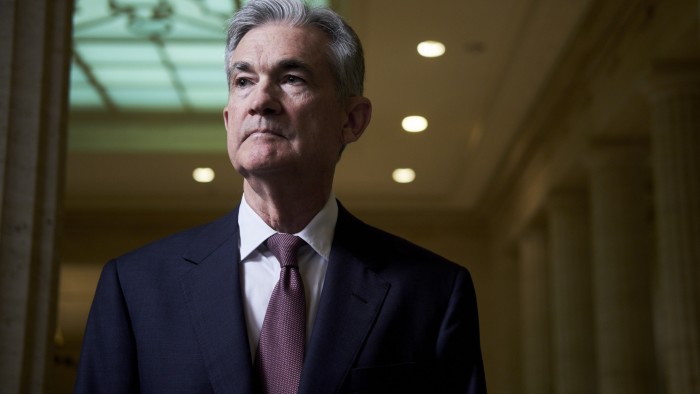Unlock the White House Watch newsletter for free
Your guide to what Trump’s second term means for Washington, business and the world
Donald Trump’s escalating attacks on the Federal Reserve have unsettled financial markets, with investors increasingly concerned about risks to the central bank’s independence and long-term ability to fight inflation.
The US dollar, a proxy for the health of the world’s biggest economy, tumbled 1.2 per cent against a basket of peers on Wednesday immediately after reports saying the US president had asked a group of lawmakers whether he should sack Fed chief Jay Powell. It subsequently pared losses.
Trump later insisted it was “highly unlikely” he would imminently fire the Fed chair, steadying the dollar, but the incident highlights how the president’s intensifying criticism of Powell is affecting markets.
“Even after pulling back, there is an increased chance that Trump will fire Powell . . . you can see it in the markets,” said Bill Campbell, a portfolio manager at bond-focused asset manager DoubleLine.

Michael Feroli, JPMorgan’s chief US economist, added in a note to clients that “the immediate crisis may have passed, though we doubt we are entirely done with this saga”.
Trump and his allies are attacking Powell on two fronts. The president, who has referred to Powell as a “numbskull”, has called on the Fed to slash rates by as much as 3 percentage points from their current level of 4.25 per cent to 4.5 per cent. The Fed has, however, refrained from cutting rates partially over concerns that Trump’s tariffs will stoke inflation.
Senior administration officials are also claiming Powell has botched a $2.5bn renovation of the central bank’s Washington headquarters, with Russell Vought, Office of Management and Budget director, alleging the project was “grossly” mismanaged and “ostentatious”.
Powell has called these claims “inaccurate” and said many of the features laid out in the original plans — including special elevators, beehives and roof terraces — had been scrapped.
“Attacking the independence of the central bank, or putting some sort of hack there who is going to do some sort of bidding on the interest rate, this looks to me like Turkey,” said Desmond Lachman, of the American Enterprise Institute think-tank, referring to Turkish President Recep Tayyip Erdoğan’s repeated sacking of central bank chiefs for failing to cede to his calls for low interest rates.

Investors broadly expect Powell will serve as chair until his term ends in May, but Trump’s assault on the Fed has prompted speculation over whether the president will nominate a successor who is more amenable to his preference for low interest rates.
Analysts said fears that pressure on the Fed could lead to lower rates was one factor pushing up market expectations of long-term inflation in recent weeks.
Market-based measures of expected inflation — known as break-even rates — rose to multi-month highs on Wednesday as Trump’s meeting with lawmakers heightened concerns about the central bank’s independence.
This move has been particularly pronounced in longer-term break-even rates, reflecting growing concerns that a more pliant US central bank could struggle to curb inflation in the years to come. Ten-year US break-evens climbed above 2.4 per cent on Wednesday to their highest level since February. They were below 2.1 per cent as recently as April.
“Part of the move higher in break-evens at the long end has to do with the perception that you might have a more dovish Fed going forward,” said Durham Abric, head of US inflation at Citadel Securities. Inflationary pressure from tariffs is also a factor.
Mark Dowding, chief investment officer for fixed income at RBC BlueBay Asset Management, said worries over Fed independence were helping to push break-evens higher. “If Powell is ousted, then the assumption is a new Fed chair [will be] nominated in order to do Trump’s bidding by cutting rates aggressively,” he added.
The yield on 30-year Treasuries, especially sensitive to the outlook for inflation, has climbed above 5 per cent this week, and the additional interest rate on the debt compared with short-dated Treasuries is close to its highest since early 2022.
Mike Riddell, a fund manager at Fidelity International, said the greater interest rate being demanded on long-term debt was “the reaction you’d expect to see if the market was fretting over central bank independence”.



